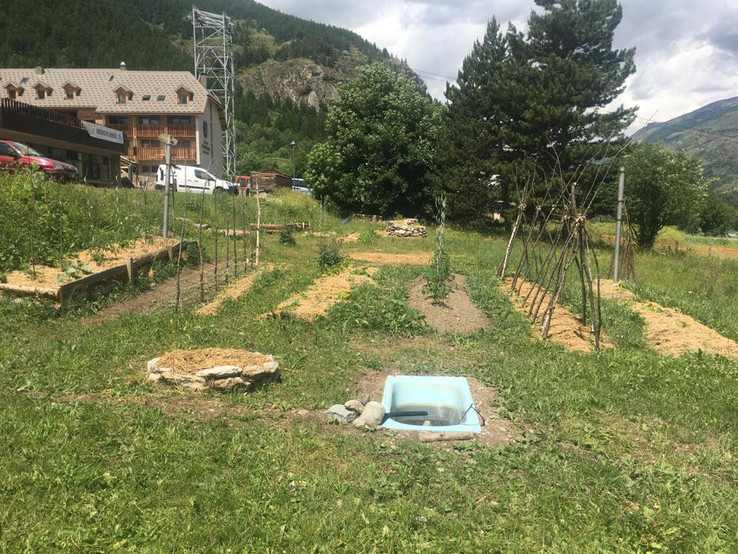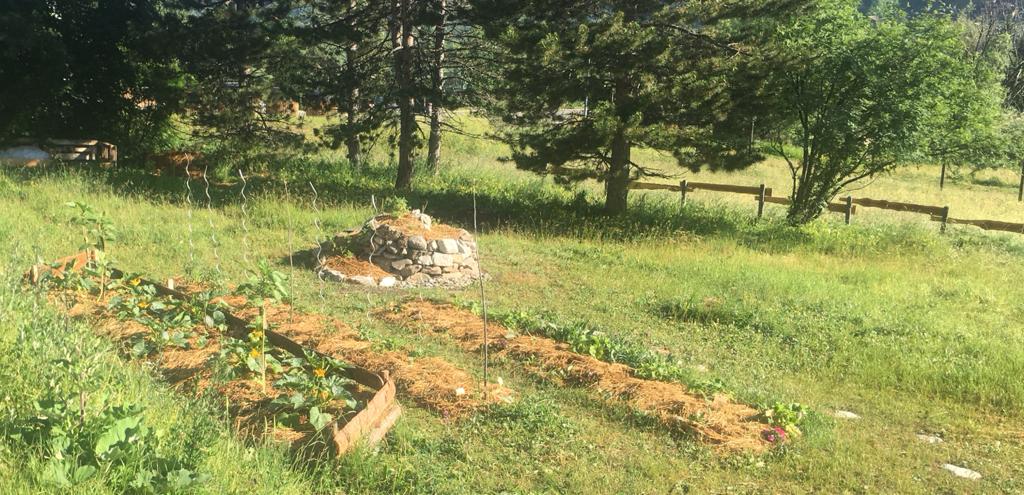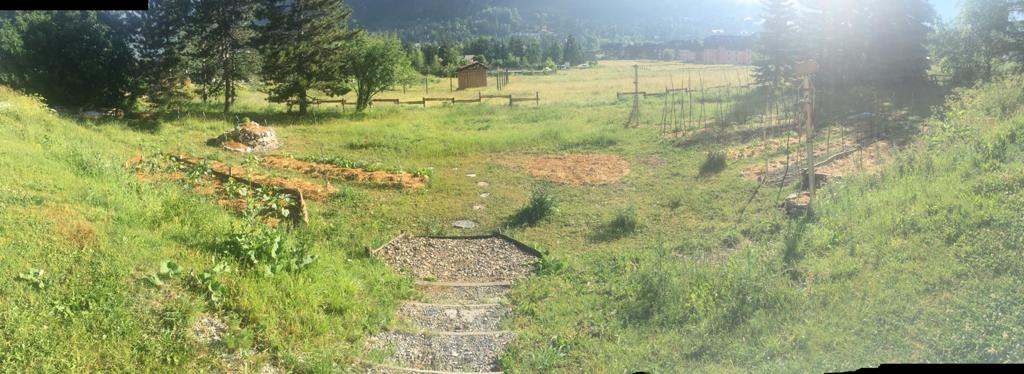- Alexis Boisselet
- Apr 15, 2021
May 2021, Le Bez (France) :
Ten days after our departure from Aix-en-Provence, we arrived in Le Bez in the Southern Alps, place of our first travel project. We plant the teepee in the field in front of the hostel (closed during this period of Covid) and meet Magalie (manager of the hostel) and Camille (in civic service) in charge of organizing workshops of environmental awareness and sustainable agriculture for the future clients of the hostel.
For us the objective is to create a permaculture vegetable garden using different permaculture techniques in order to show them, compare their advantages/disadvantages, and especially to produce food directly accessible for the kitchen of the youth hostel.
The field in front of the hostel, where our teepee is proudly planted, we want to create a productive area of about 100 m².

We first start by observing the land and then designing what we want to do. Once we know what we are going to put in place, we will collect the necessary raw materials from the neighborhood (topsoil, RCW/shredded wood from the local waste disposal center, manure from the riding center, straw and hay from the farmers...).
With help, we carry out the preparation of the soil for the different structures:
Classic beds: weeding and decompacting the soil, enriching with compost and manure
Soilless lasagna: installation of a lining and cardboard, then alternating layers of carbonaceous and nitrogenous matter and finally a few cm of topsoil to be able to plant now
Forest mounds (HugelKultur): clearing to a depth of 50 cm, then filling with wood (avoid conifers, too acidic) more or less thickly at the beginning of decomposition and with RCW. On top of this, a 10 cm layer of nitrogenous material is placed before covering the whole with topsoil.
Creation of a trench downstream of the field to recover the nutrient-laden sludge deposited by water runoff
Finally, we carry out a sowing workshop.
A few weeks later, all that remains is to transplant the plants according to the previously established plan (to respect positive and negative associations, crop rotations, nutrient-intensive species...)
Results Beginning August 2021:
Thanks to Camille, Magalie, César & all the team of the Bessoulis house for your help and your company, the evenings, the too good meals, the board games, the meetings and the 421 !
Alex, Rico & Jéjé






















































































































